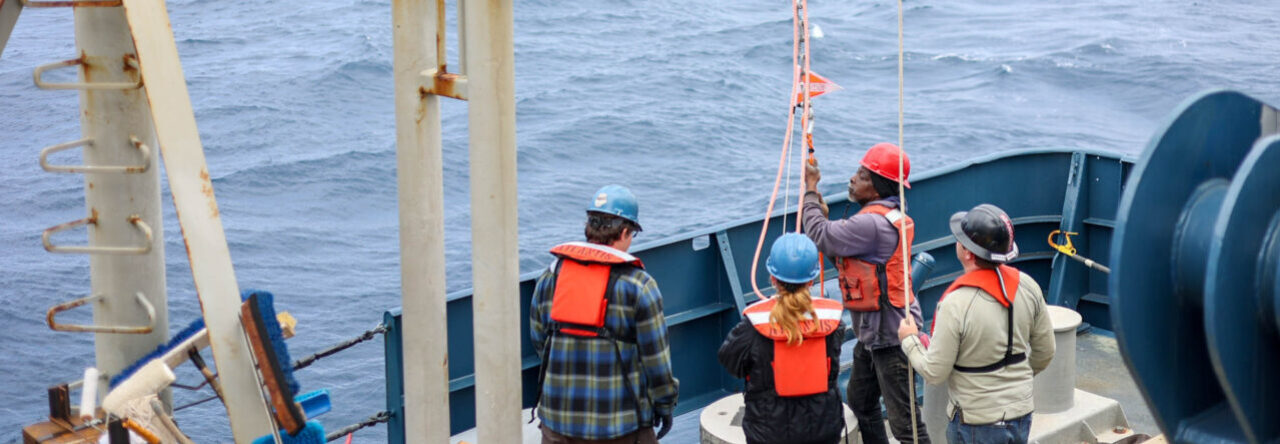WEEK #3 (10/21 – 10/28)
Underway to Tahiti and Befriending the Underway CTD
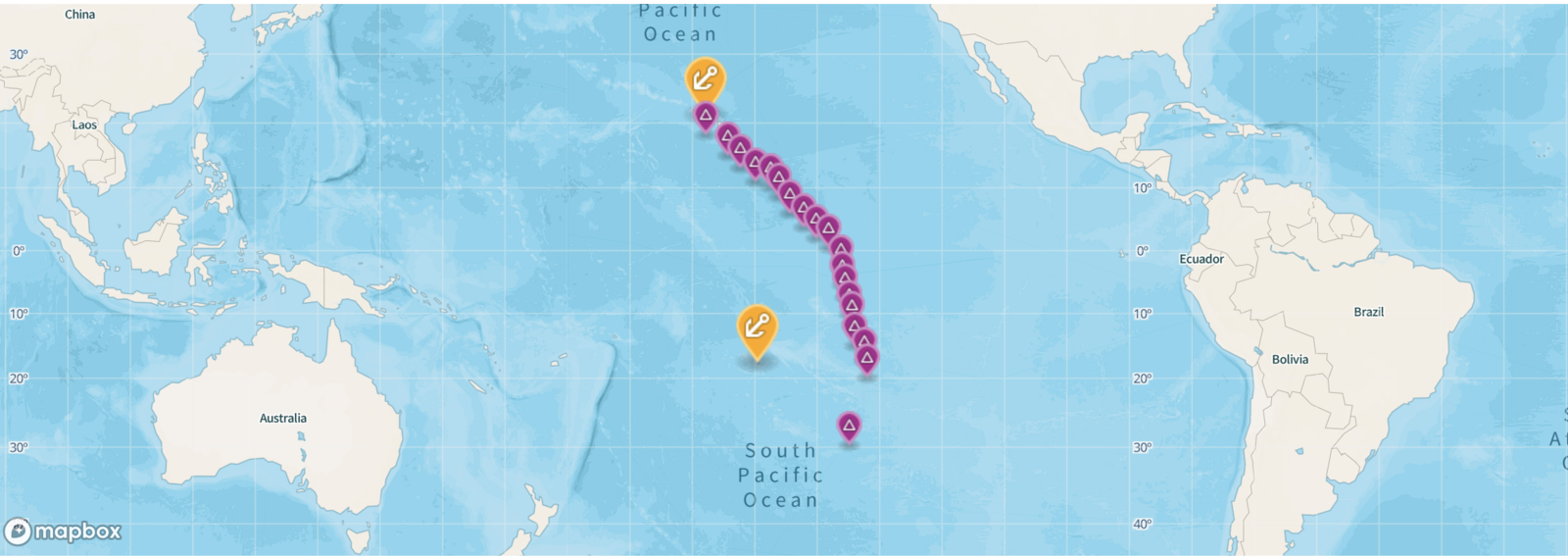
– The proposed Kilo Moana’s SPOC 2418 expedition cruise track.
Unfortunetly, per my last blog post, within the first few hours of the South Pacific Cruise, the Kilo Moana had to return to dock to address some repairs in the generator room and wait for a component to come to the island.
Sailing day couldn’t come soon enough! The Kilo Moana left Pier 35 on Oct 23 at 1730 Hawaii time into a gorgeous sunset. The goal of this mission is to characterize oceanic primary production and metabolic rates to further understand the carbon cycle along a transit of about 15° N to 30° S. This is done by collecting oxygen and optical proxies for carbon on a daily basis. This involves conducting in situ (on-site) incubation experiments using gas arrays, primary productivity arrays, and sediment traps that look at the rate at which organisms are growing in the water column (arrays) at depth or what is floating out of the photic zone (sediment traps). Additionally, we use profiling methods such as a CTD-Rosette cast every 3 hours (to varying depths), Hyperpro (which measures the optical properties of the ocean), an Underwater Vision Profiler (UVP) (which measures the size and abundance of particles and zooplankton in the water column), zooplankton net tows, and a wire walker (a CTD-like instrument that is attached to a buoy and can take up to 70 water column profiles a day)! Not to mention a wide suite of underway/continuous data like the Acoustic Doppler Current Profiler, which uses sound waves to measure the speed and direction of currents throughout the water column, the Imaging Flow Cytobot, which takes images of the phytoplankton that get sucked into the ship’s underway seawater system, meteorology, and the underway CTD!
The expedition will consist of a combination of long and short stations that last 2.5 days and 3 hours, respectively. When we are not at station, we will be doing daily water grabs for nutrient analysis as well as deploying an underway CTD (uCTD) every 2 hours.
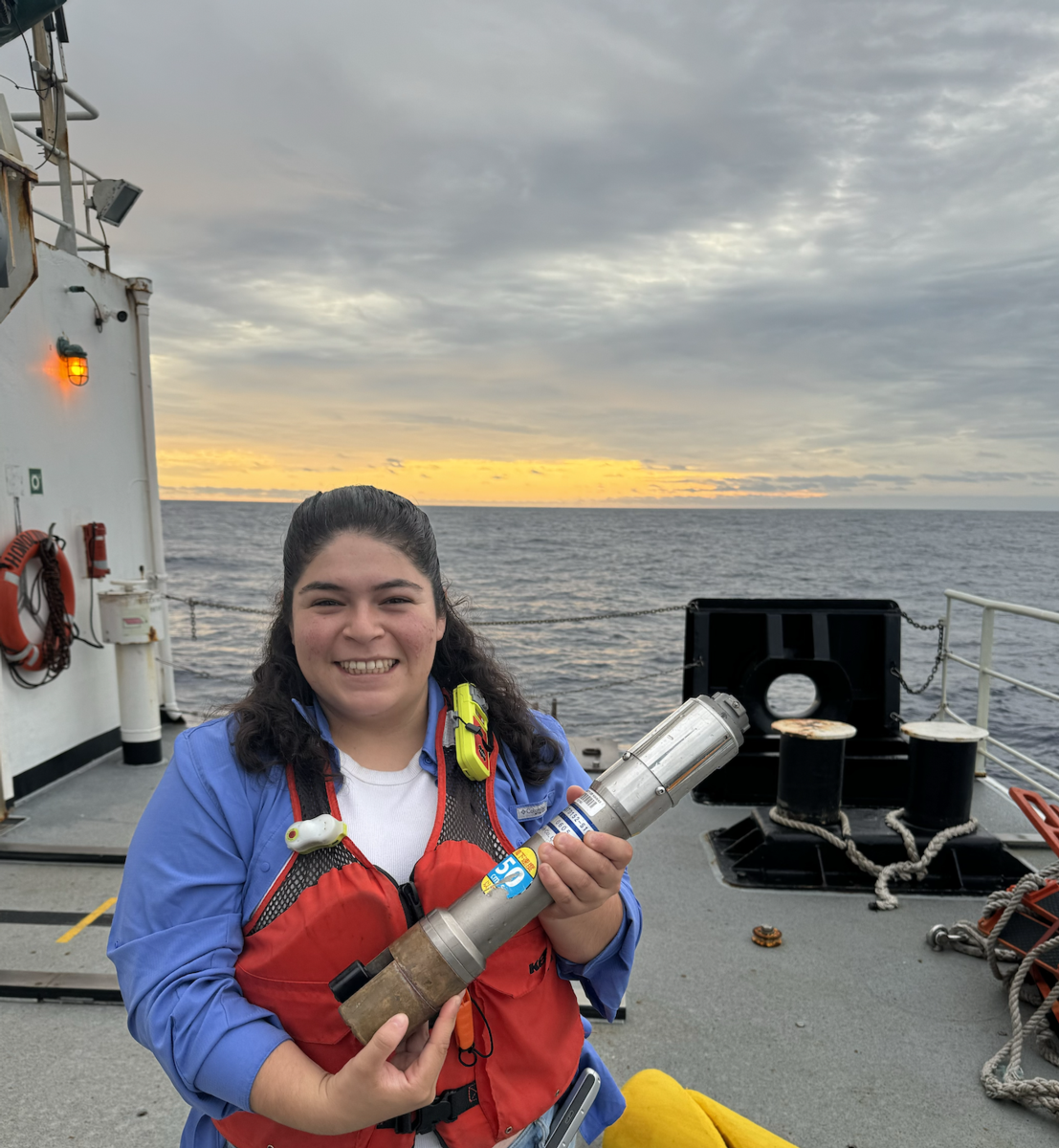
– Briana Prado holding the underway CTD
I’ve learned to love the underway CTD. It’s so cute! The sensor is a titanium pellet-looking thing that contains conductivity, temperature, and depth sensors; it also contains a fluorometer, turbidity, and dissolved oxygen sensors. It sits on the starboard side of the boat and can be deployed while the ship is in motion as long as the ship is going under 8 knots. Unlike a regular CTD-rosette, the uCTD does not collect water and does not need the ship to stop, therefore making it a great way to efficiently get an idea of what the water column looks like below. Plus, it provides the perfect excuse to go watch the waves for at least 20 minutes every 2 hours.
To deploy it, you detach the spindle from the overboard handling system (OHS), set the instrument to free, and then you just drop the uCTD in the water. We’re largely interested in what’s happening at the surface, so we set a timer for 100 seconds to only collect the top 400 meters of the water column. Once we reach 100 seconds, we apply the brakes to the feeder line, change the setting to rewind, and wait until the CTD is close to the surface. Once we can spot it on the surface, we get a cushion foam ready to slide through the line so we can reel the line in without banging the uCTD on the stern of the ship.
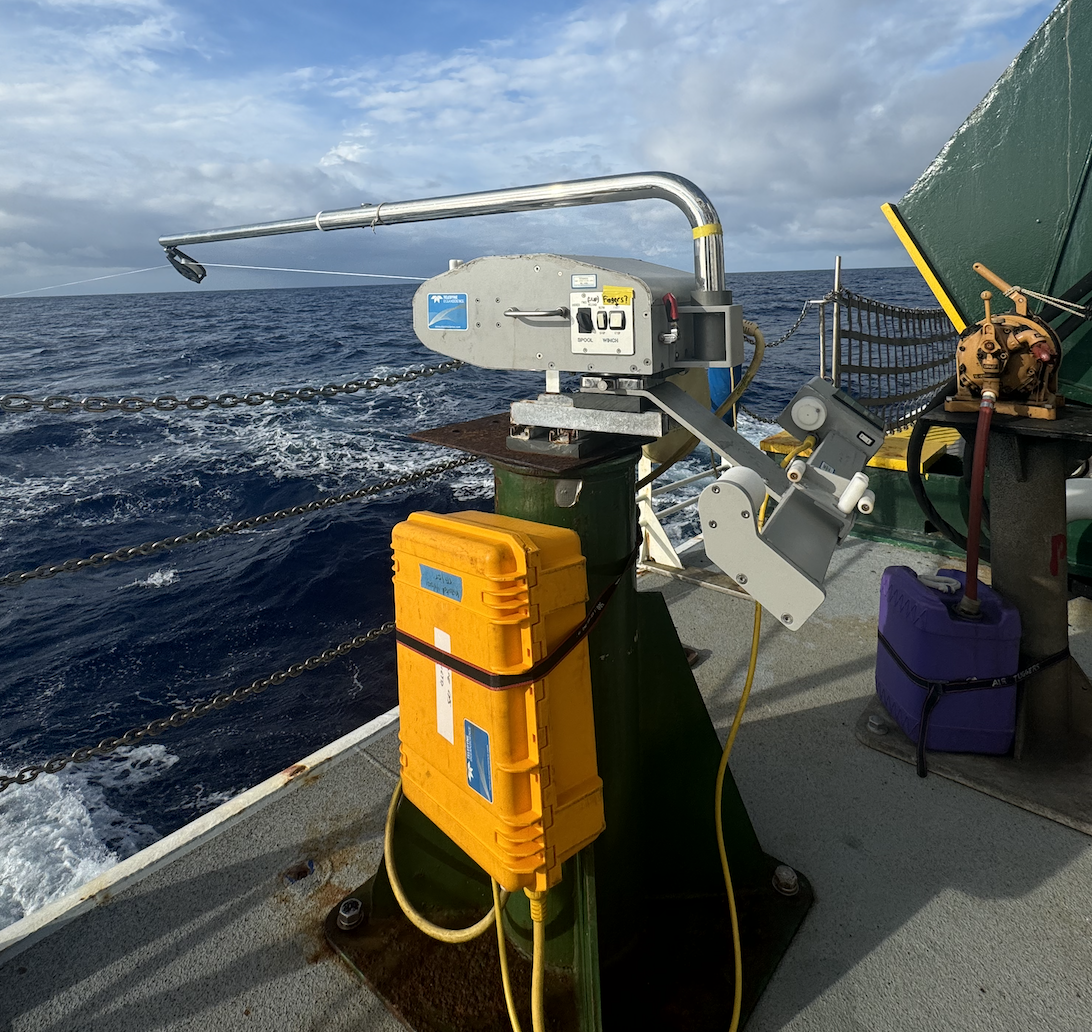
– The Underway CTD overboard handling system.
Due to the high frequency with which we are deploying the underway CTD, issues can arise quickly. During the 12th cast of the cruise, while returning the line back into the spool, the power on the OHS stopped working, and the line kept spooling out until I finally realized to pull the brakes. We were startled that it had already stopped working so early in the cruise but also not surprised given the high frequency with which we use the instrument.
Tully, Ben and I were about to reel in over 400 meters of wire by HAND when we remembered that we could insert a bolt into the winch drum and use a powered tool to reel it in! Phew, that just saved us a couple of hours!
Once we reeled all of the line, we finally got to investigating what went wrong. Originally, we thought that maybe the motor on the uCTD had gone bad, but with a voltmeter in hand, we realized that the issue lay in the Pelican Power Junction box since it was not reading out any voltage.
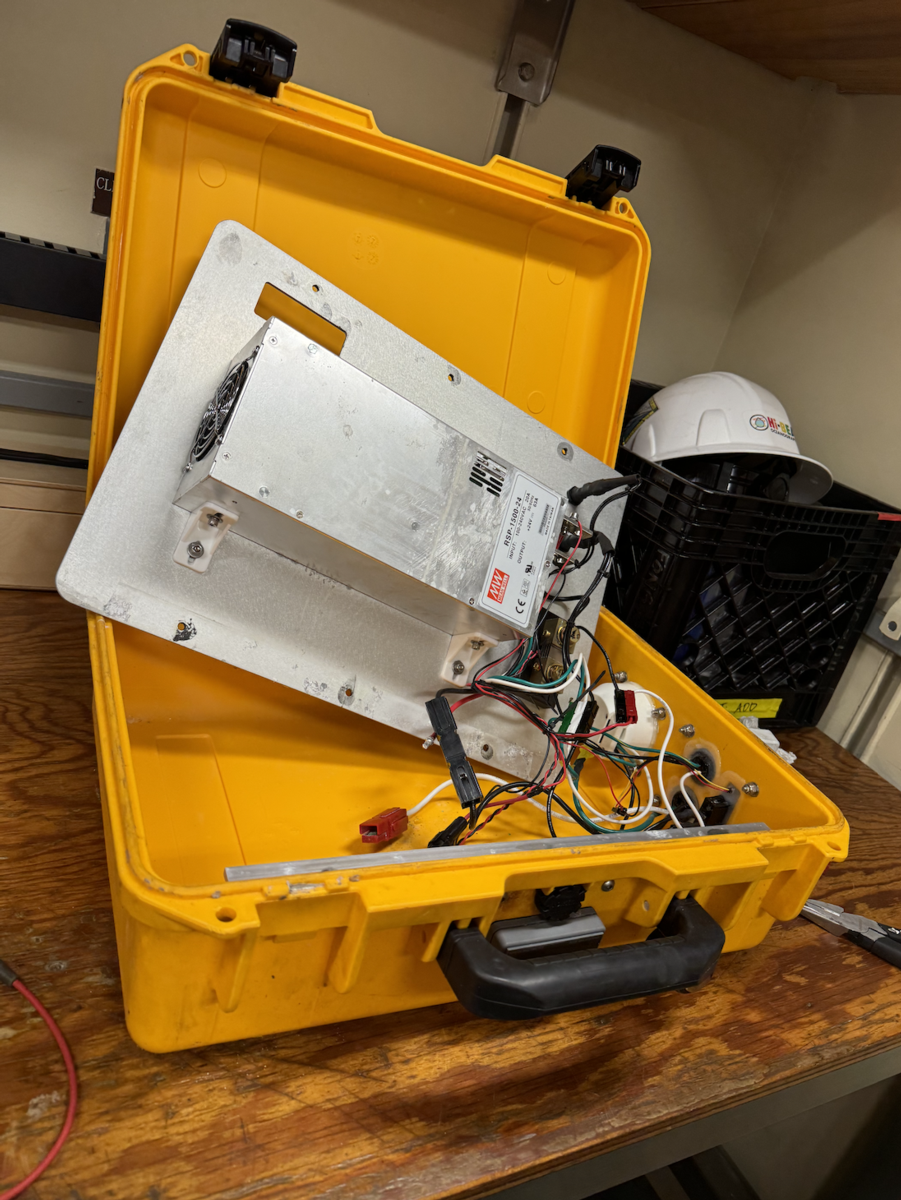
– Taking a peak inside the underway CTD pelican box.
After a quick dinner, Tully and I took a look at the inside of the box and realized that the positive lead in the power box had come undone, most likely due to how corroded it was. Phew, this is a workable issue! Now we just need to cut back some of the wire, attach a butt connector, and heat it into place. Once we put the box together, we double-checked with the voltmeter, and it was reading a value, so we had fixed it and could now re-install it back into the OHS and proceed with our routine underway CTD. We did it, lo hicimos! I now cross my fingers and hope that we can continue doing uCTDs throughout the cruise and that any issues that arise have workable solutions!
We’ve done a number of these so far; take a look at our data! These profiles help inform the team on areas of interest to sample as we are underway! Gaps in the data are often a result in fixing the instrument or bad weather.


Amongst other things, we got to sail over a part of the ocean that is over 19,000 ft deep (5,982 m), which really blew my mind! Wish us happy sailing! <3


